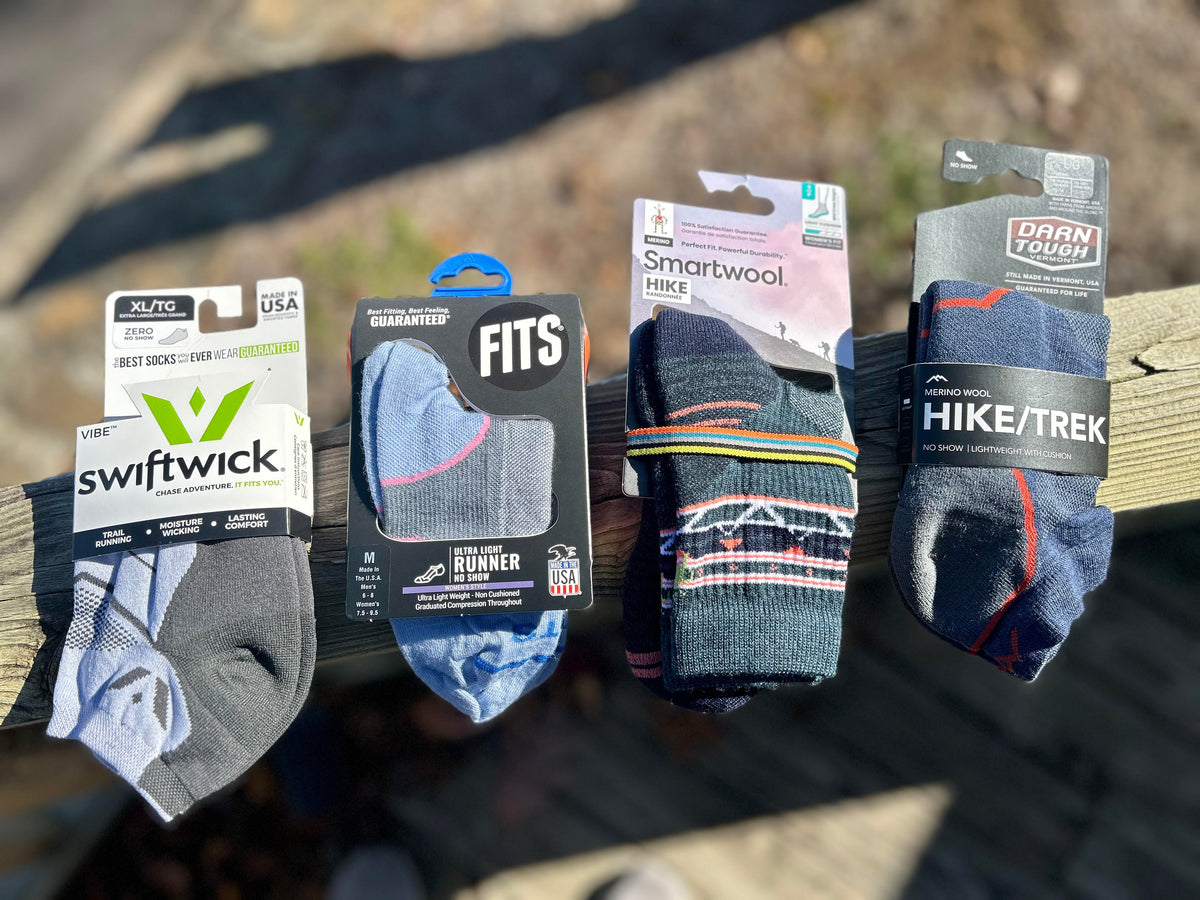
Cotton, Synthetic, and Wool Socks for Winter and Colder Weather
|
|
Time to read 4 min
|
|
Time to read 4 min
As temperatures plummet, the importance of keeping your feet warm and comfortable becomes paramount. The selection of the right socks plays a pivotal role in warding off the cold, as nobody relishes the discomfort of frigid feet. Let's delve into the distinctions between cotton, synthetic, and wool socks to understand their unique attributes and how they cater to varying needs and preferences.
Advantages: Breathability: Cotton is highly breathable, allowing air to circulate around the feet, which helps prevent overheating and ensures comfort, especially during prolonged wear. This breathability is essential for maintaining a pleasant foot environment and reducing the risk of sweat buildup and odor.
Additionally, cotton is prized for its soft texture, providing a gentle and comfortable feel against the skin. The inherent softness of cotton fibers makes it a preferred choice for individuals with sensitive skin or those who prioritize comfort in their footwear.
Disadvantages: Absorbency: Cotton has a tendency to absorb moisture quickly, which can be problematic in colder conditions. When exposed to rain, snow, or excessive sweat, cotton socks can become saturated, leaving the feet damp and chilled. This can lead to discomfort, increased risk of blisters, and even potential foot health issues such as fungal infections.
Moreover, cotton socks have a slow drying time once they become wet. This prolonged drying process can exacerbate discomfort and increase the likelihood of developing foot problems. Wet socks not only feel unpleasant but also compromise foot hygiene and may contribute to the development of conditions like athlete's foot.
Best Situations: Considering these advantages and disadvantages, cotton socks are best suited for milder winter days or indoor activities where breathability and comfort are paramount. They provide a soft and breathable option for everyday wear, offering comfort and moisture management in moderate climates. However, it's advisable to avoid using cotton socks in extremely cold or wet conditions where their absorbency and slow drying time may pose challenges to foot comfort and health.
Advantages: Moisture-Wicking: Synthetic fibers like polyester and nylon excel at pulling moisture away from the skin, effectively wicking sweat and water away from the feet. This helps keep the feet dry and comfortable, reducing the risk of blisters, chafing, and bacterial growth. The moisture-wicking capability of synthetic socks is particularly beneficial during intense physical activities or in wet conditions, where moisture management is essential for maintaining foot health and comfort. - Quick Drying: Unlike cotton socks, which tend to retain moisture and take longer to dry, synthetic materials dry rapidly. This quick drying time is advantageous for active individuals or those exposed to wet conditions, as it helps prevent prolonged discomfort and potential foot health issues associated with dampness. Whether you're hiking through rain-soaked trails or participating in water sports, synthetic socks offer practicality and convenience by drying swiftly between uses. - Durability: Synthetic materials are often more resilient and hardwearing than natural fibers like cotton or wool. This durability makes synthetic socks well-suited for rugged outdoor activities and extended wear, as they can withstand the rigors of challenging terrain and frequent use without compromising performance or longevity. Whether you're trekking through rocky terrain or navigating rough trails, synthetic socks provide reliable protection and longevity.
Disadvantages: Breathability: While synthetic fibers excel at wicking moisture away from the skin, they may trap heat and moisture close to the feet, especially during warmer conditions or high-intensity activities. This reduced breathability can lead to potential discomfort and increased sweating, particularly for individuals prone to foot perspiration. - Odor Retention: The synthetic composition of these socks can create an environment conducive to bacterial growth, resulting in unpleasant odors over time. To maintain freshness, synthetic socks may require more frequent washing compared to natural fiber socks.
Best Situations: Synthetic socks are ideal for activities that involve moisture exposure, such as winter sports, hiking, or snowboarding. They are also suitable for those who prioritize quick drying and durability.
Advantages: Exceptional Insulation: Wool is renowned for its superior insulation properties, providing excellent warmth even in frigid temperatures. - Moisture-Wicking and Odor Resistance: Wool naturally wicks away moisture and inhibits the growth of odor-causing bacteria. - Temperature Regulation: The material of wool can help regulate foot temperature, keeping your feet warm in cold weather and cool in warmer conditions.
Disadvantages: Bulkiness: Wool socks can be bulkier than other types, which may limit their use in tight-fitting shoes or certain activities.
Best Situations: Wool socks are the top choice for extremely cold conditions and outdoor winter activities. They are ideal for skiing, snowboarding, hiking, or any situation where maximum warmth, moisture-wicking, and odor resistance are needed.
As you can see choosing the right socks for winter and colder weather requires considering the advantages and disadvantages of each type. Cotton socks offer breathability and softness but may not provide adequate insulation in extreme cold. Synthetic socks excel at moisture-wicking and durability, making them ideal for active pursuits in wet conditions. Wool socks stand out for their exceptional insulation, moisture-wicking properties, and odor resistance, making them the top choice for frigid temperatures and outdoor winter activities. Understanding the advantages and disadvantages of each type allows you to make an informed decision based on your needs and activities. So, whether you're hitting the slopes or braving the chilly outdoors, choosing the right socks ensures your feet stay warm, dry, and comfortable throughout the winter season. Stay cozy, stay active, and embrace your passion with toasty toes!
See you out there, GET OUT, GET ACTIVE, BE INSPIRED, LIVE YOUR PASSION, (WITH WARM TOES!)